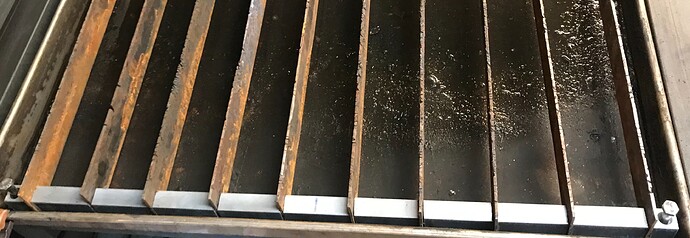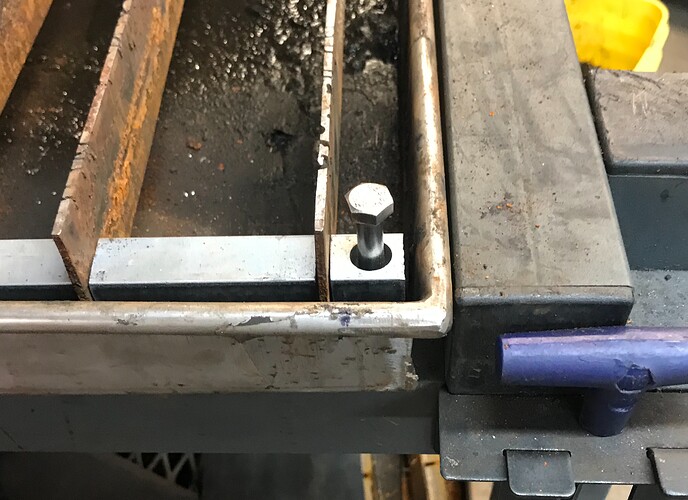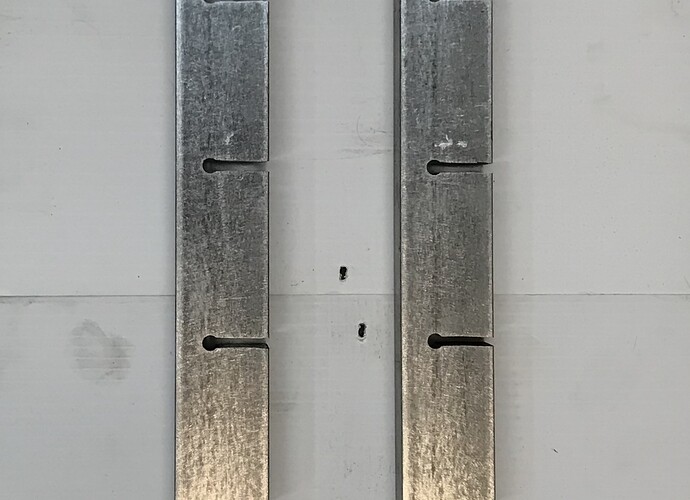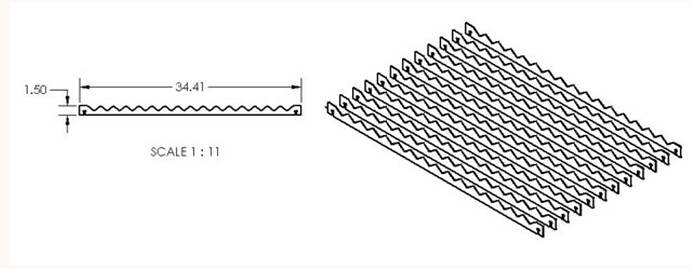After a lot of frustration with the aluminum slat holder I decided I would make my own and this is my best option so far as I can level the slat bed manually to match the gantry and I have my slats dialed in to less than 1/16th of an inch. Attached are the photos !
I like the concept & execution. But 1/16 is the height you would want with a 30A/0.9mm tip combo. So if your bed is out of level relative to the torch holder that much you may find that you’re too high (or too low) somewhere on the cut if it’s where you’re out of level but within your 1/16 tolerance.
I totally agree with you, the bed is dead one with the torch holder but the individual slats themselves have a lot of variation my slat holder slot depth is dead on +/- .007” today I will spend more time dialing it in Iam sure I can get it better. Just dealing with the variation in the slats them selves is a pain
I think the slat holder is the critical piece if the bottom of the water table is parallel to the torch then the slots and the slats themselves become the limiting factor. If the slots aren’t dead on or the slats aren’t all the same height then the bed to torch height will vary.
I think a more precise design would be similar to one that someone just put up on here where the slot holders are more a square bar that holds the slats by the ends rather than setting the slats onto the slat holders. That would put the bottom of the slats directly on the bottom of the tray. That then makes the slat height the variable.
The initial height of the slats is pretty controllable. But we also need a method to dress the tops of the slats as they get cut up by the plasma as it cuts through our designs. On a CNC router there’s a process that runs a special mill to flatten the top. We need to find some way to do a similar process to get the dross & any cut artifacts that extend above the slat surface back down to the reference height.
Not sure how to do that right now because grinding any of the slats may change the height of the slat. Dips may be okay if they’re in the field but not if they’re on the table edges or even the edges of the material.
How do other folks handle the ongoing maintenance of slat beds? THC (floating Z-axis) would eliminate this but for the folks who aren’t going to have a Z mod to their table we need to find a solution to how the slats get chewed up over time as it’s used before they get to the point they need to be replaced.
Just throwing these out there - interested in how folks think we can address these issues to make sure we can get the slat surface parallel to the torch mount & keep it that way as we use the table.
I found that the water try is not very flat or consistent so that is why I am supporting it in the 4 corners. Also I’ve used this type of slat bed and is less vulnerable to being cut up see attached photos
The biggest issue I had with leveling wasn’t the slat holders so much as it was the flimsy frame and water table.
If the legs aren’t level the whole table frame flexes and so does the table.
I’ve had no issues with the frame. I’ve got the frame dialed in and only have an issue with variable slat height differences that affect how flat my thinner materials lay on the bed & maintain a consistent spacing between the torch & material.
Every time you remove and replace the slats the holders get more bent. Mine were almost unusable.
I was thinking about this legs on the table itself being a little on the flimsy side… I may just gusset the corners right from the start, And those that have added the additional tank/storage shelf underneath the table have pretty much handled that end of things already… I don’t plan on having to move my table a WHOLE lot but would like to feel that things end up exactly the way I had them when first setting the table up…
This is just thinking/planning ahead of time as I wait for my table to ship… So my time spent pondering may end up being for no good reason at all… We’ll take a close look when we unpack and set up…
I’m kind of liking the “corrugated” slats as pictured above also… May depend a bit on what exactly your cutting at the time… Hmmm… More thinking…
has anyone tried using all aluminum slats? I have some laying around and thought I could cut down on the rusty water?
If you cut steel, you’ll have rusty water anyway. Most of the rust is from the steel dust and slag that gets left in the pan after cutting.





